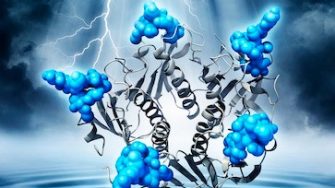
Advances in electron microscopy and x-ray technology allow scientists to determine the structures of biological macromolecules at atomic resolution, including large complexes within cells. These structures facilitate a complete molecular understanding of biological and cellular processes.
Atomic resolution images of proteins give critical insight into their function and enable the rapid progression of a wide variety of research disciplines—from understanding how a protein motor works to enabling the development of human therapeutics. The two main techniques employed to resolve atomic level molecular structures are X-ray crystallography and cryo-electron microscopy. Both methods are accessible and used by BABS researchers. The significant computational advancement of Alphafold2, which accurately predicts protein structures, has been incorporated into our workflows. Structural biologists within BABS have specialist skills including robotic crystallsation, X-ray structure solution, CryoEM single particle reconstruction and sub tomogram averaging as well as skills in a range of biophysical and computational methods and structure-based drug design.
Students are given hands-on access to these methods and training to prepare biological samples right from the DNA sequence through to the interpretation of a final atomic structure and all the steps in between.
In this section
Mark Wainwright Analytical Centre
Structural biology methods rely on state-of-the-art instrumentation. BABS researchers have access to a specialised robotic protein crystallisation facility located in the BABS building D26.
This facility has in-house screening and data collection using a state-of-the-art X-ray diffractometer. UNSW BABS researchers are also a part of a collaborative access group awarded experimental time at ANSTO’s Australian Synchrotron. Cryo-EM facilities are available via a Thermo Fisher Talos Arctica Cryo TEM. Structural biologists also use a range of biophysical methods and computational tools including an UNSW hosted Alphafold2 protein structure prediction resource.
Our structural biologists study a range of biological problems including probing the roles of proteins in shaping and controlling membranes in cells, understanding how protein machines harvest sunlight, what effect missense mutations have in proteins in clinically isolated disease cases, how drugs can be improved to target specific proteins and how enzymes may be tuned for industrial applications.





